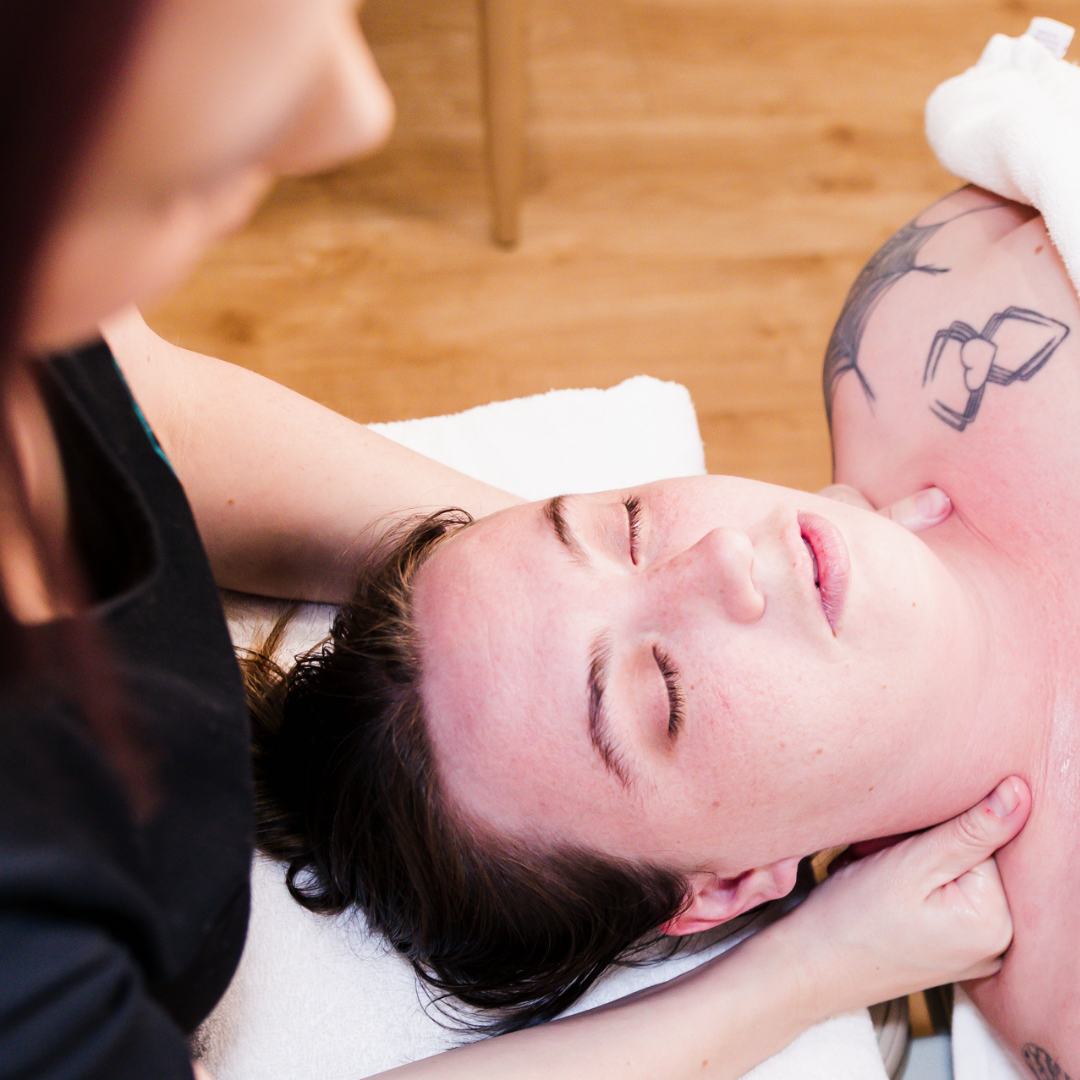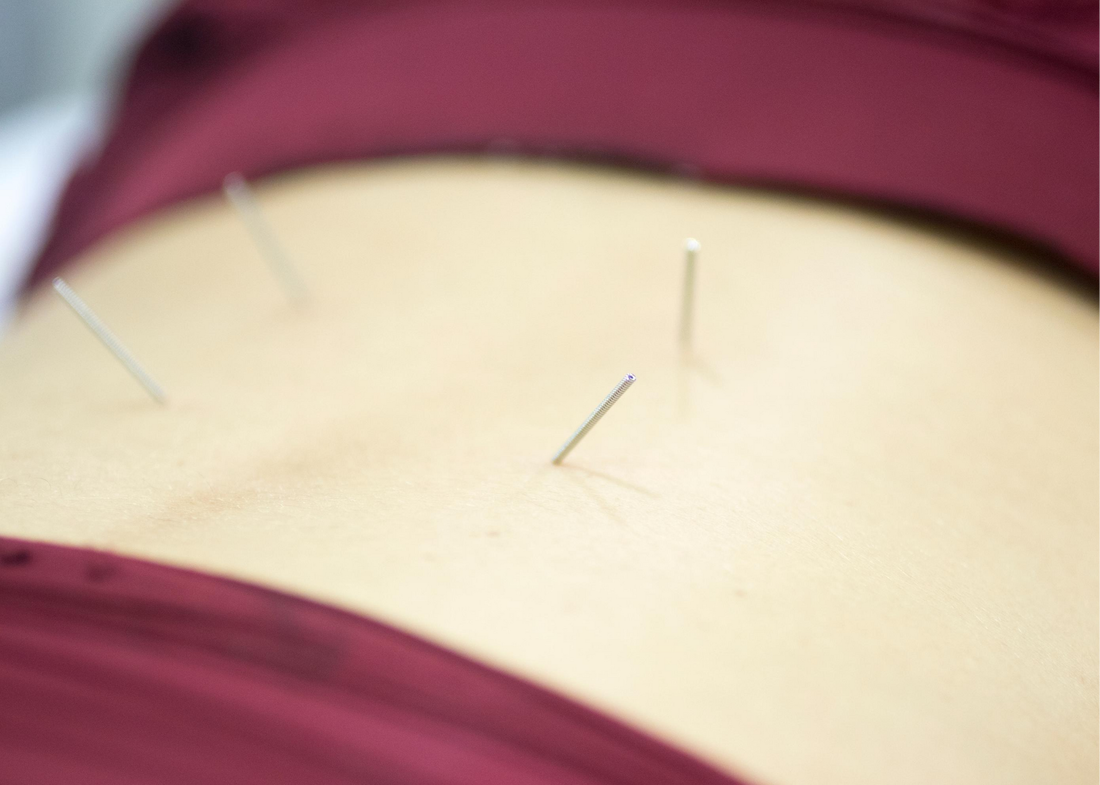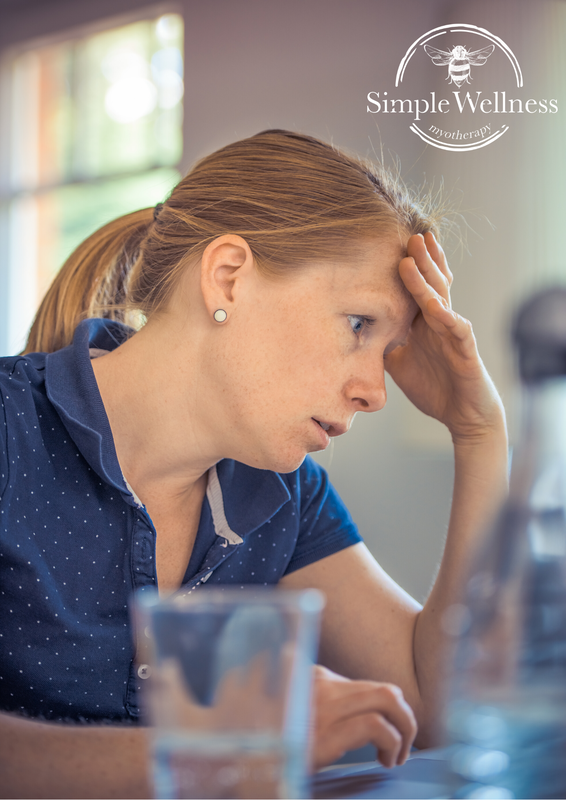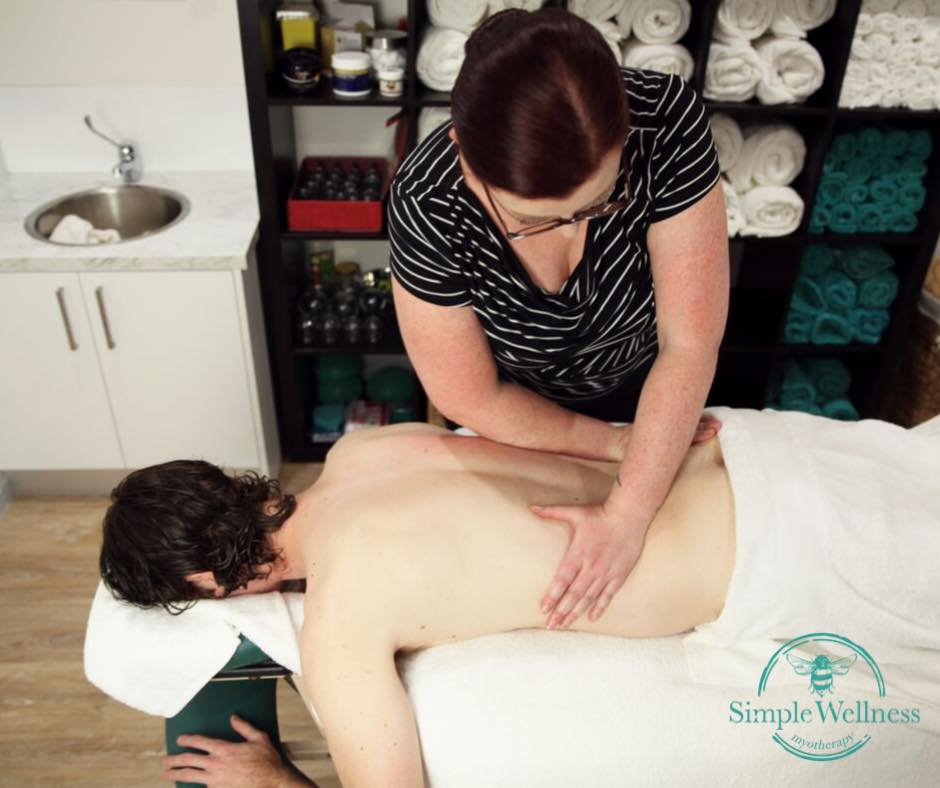|
By Jacqui Mulholland, Remedial Massage Therapist You might have heard of this relatively new slang term called “tech neck” which is becoming more and more common to see in the media. Tech Neck refers to a group of symptoms characterised by neck tightness and tension caused by chronic overuse of the neck muscles that are working overtime to keep your head upright. Neck, shoulder and upper back tension and pain are some of the most common issues that our team treat every day, so if you're experiencing this pain, you're not alone, and there are plenty of ways we can help bring relief to your symptoms. What are the symptoms?
You could be experiencing Tech Neck if you have noticed some of the following symptoms;
If you have any of these symptoms and are using a screen regularly, this can be one possible cause for the discomfort you are experiencing. Tech has become an essential part of our daily lives and whether we like it or not, it’s here to stay. So we need to understand what this is doing to our body’s and how we can help prevent long term damage and support a healthier spine. The human head weighs about 5kgs, and all of that weight is being supported by our postural muscles of the neck, chest and upper back. The neck muscles are supporting most of that weight. When you are looking down at your screen, these neck muscles engage to stabilise your head for you. Being in this forward flexed position for prolonged periods of time just adds to the amount of stress being placed onto these muscles and eventually, they will become tired, tight and sore. Overtime, without treatment this can lead to more complex neck, upper back and shoulder conditions affecting mobility, functioning and quality of life. It can also lead to fatigue, poor concentration, sleep disturbance, frustration and reduced productivity. Fortunately before it gets to this stage you have a really effective, accessible and non-invasive treatment method to manage these symptoms naturally. Massage and Myotherapy work to free up and loosen these affected neck muscles. Regular treatments help to prevent ongoing issues arising as a result of overuse of screens. Our therapists will also advise you on easy, affordable and time-wise prevention strategies you can use at home in between treatments to alleviate your pain and increase the effectiveness of our treatments. Prevention What can you do at home to help prevent Tech Neck becoming an issue for you?
Keeping up with some of these simple preventative measures at home can help reduce the frequency of and intensity of your symptoms. If you are unsure whether your symptoms are as a result of Tech Neck or some other condition, it is always best to visit your primary health care provider to eliminate other potential causes. With some regular Massage and Myotherapy treatments, Tech Neck can be well managed and we can give you some specific advice including home care & exercises to maintain the health and integrity of your neck muscles. Make a booking with one of us at Simple Wellness and we will assess your symptoms and provide a customised treatment plan to get you the best results for your Tech Neck. By Jacqui Mulholland
Headaches and Migraines are a common complex and varied condition that may affect most of us at some point in our lives. The frequency, duration and intensity can vary, as well as the types of symptoms that can indicate whether you are experiencing headaches, or migraines. I used to be so confused about how to categorise my symptoms as a longtime headache/migraine sufferer. I would go to GP’s explain my symptoms, how they would affect me and the “cycle” with which they seemed to occur. They had a predictable pattern, and symptoms were usually quite similar each time, only varying in intensity and duration. My experience of these symptoms was often quite an unpleasant and fatiguing process. There was not much else offered as pain management at the time from my GP, the suggestions were pain meds, rest and reduce stress. This would leave me feeling a little bit deflated and helpless to do anything to change or at least manage my condition. My headaches were classified as “menstrual migraines” or “hormonal headaches”. There is a lot of confusion and unknown factors about headaches and migraines, and you wouldn’t be alone in feeling at a loss as to where you can go and the type of treatments that may help you. You should always visit your GP in the event that you suddenly start getting headaches or your headaches are changing. There are many different treatment options now for headache/migraine sufferers that weren’t available 20 years ago so it’s always worth mentioning any new symptoms to your main healthcare provider. So how do you know the difference between headaches and migraines? Well there are several different types of headaches and “Migraines” are just one of those types. The main difference between migraines and the other types of headaches is they may include some of the following symptoms (but not all)
As you can see these symptoms should not be ignored if you have never had migraines before or if your symptoms intensity or change as this could be an indication of something more serious. Always consult your healthcare provider as a first point of call. There are other types of headaches that have similar symptoms but are not classified as migraines: some of these you may have heard of: cluster, tension, sinus. These may present a little differently in terms of the location of the pain symptoms, and intensity can vary but don't usually present with the visual disturbances, heightened sensitivity or with nausea & vomiting. So whilst there is no cure for headaches or migraines, there are treatments and preventative techniques that may help. There can be certain triggers for you that you can help by avoiding. Certain foods, alcohol, getting enough sleep, regular moderate exercise, drinking water etc. In terms of prevention and management of your symptoms, that’s where remedial massage & myotherapy can be really beneficial. When you're experiencing an episode, you might notice that you will feel like your body needs rest and quiet time to recover. Overstimulation can often exacerbate symptoms. Allowing your nervous system and inner balance a chance to restore and calm down the pain sensitivity can really assist in managing the pain. Regular massage may help reduce the intensity & frequency of your symptoms, address any muscular tightness that may be contributing to sensitivity in the head, jaw, neck, upper back and shoulder areas. Remedial massage & myotherapy can provide an opportunity for your body to rest and receive nurturing touch, warmth, blood flow and may assist in improving sleep, reducing stress, regulating hormones & nervous system functioning. Your treatment may not get rid of your headache or migraine but it may help reduce the intensity and duration. I love working to help assist headache & migraine sufferers, because of my personal experience with the condition and knowing that remedial massage and myotherapy has helped me tremendously with the management of my symptoms. I know how good it can feel to receive that attention and touch to calm my hypersensitivity and I often have a really good rest/sleep following the treatment which makes so much difference to my ability to function. If you are a headache or migraine sufferer, come in for a massage and even consider regular treatments to manage recurring symptoms. This is a condition with complex clinical presentations but a very real pain experience for many people, and I’d love to help you feel and function better with less pain. I am available to help you on Mondays and Wednesdays 9.45am-2pm, Thursdays 2.45pm-7pm, and every second Saturday 9.30am-2pm. Book in with me or one of our myotherapists via our website: www.simplewellness.com.au/treatments-bookings I look forward to working with you! Dry Needling is a manual therapy technique used by Myotherapists to help reduce pain and tension in muscles. We've previously discussed the similarities and differences between Dry Needling and Acupuncture, but you may still be wondering - how does Dry Needling actually work? The "Dry" Needle
The reason they are called "dry" needles is to differentiate them from hollow needles like the ones used for blood tests or vaccinations. A dry needle can't inject or withdraw fluids from your body. The needles themselves are ultra thin and flexible. They come with a guide tube to allow us to place them with care and precision. All needles used for dry needling are single use only. Where We Apply It Myotherapists use dry needling in painful, tight or restricted muscle groups. You may have heard about Trigger Points - those painful, tight bands that can form within a muscle over time, with repeated use or from injury. Dry needling is a technique that helps address these trigger point areas in a very specific and precise way. We assess the areas through watching you move and through palpating the muscles to find the best spots within the muscle to position the needle to relieve the trigger point. We also assess the surrounding joints and muscles, for example for hip pain we may find that dry needling in your lower back or in your thigh can help relieve pain and strain from your hip. What Happens When We Needle A Trigger Point? When we first insert the needle to the muscle, it can be felt as a little pinprick sensation on the skin. We then guide the tip of the needle into the right angle and depth of the muscle to directly stimulate the trigger point. This takes some skill and the ability to visualise in 3D the target muscle and the surrounding tissue like nerves, veins, arteries, bones and ligaments. By applying the needle into that trigger point, it causes a combination of chemical and electrical responses by the muscle. The micro damage causes by inserting the needle sends chemical messengers to the brain to get a healing response to occur. It can also cause a nerve impulse to occur, making the muscle twitch and release. To Stimulate or Not To Stimulate Because our aim in using dry needling is to get a change in the muscle tension, we often can stimulate the needle. This means we might gently move the needle in a pulsing in/out movement to repeatedly stimulate the trigger point, or we might twist the needle in a particular direction or in a series of back and forward movements. Stimulation of the needle can lead to more twitching, what we call Local Twitch Response. Dry needling can be effective even without the involuntary muscle twitch response. Some practitioners prefer a more intensive stimulation of the needles, however we prefer a gentle and slow approach. Does Dry Needling Hurt? In most cases, not really. Which is often surprising! The most common sensations you'll feel are the pinprick of the needle being positioned, a dull aching or tightening sensation around the needle, and the quick twitching response of the muscles releasing. The twitching can sometimes feel intense, but only lasts a very short time. After needling, some people can experience a little localised soreness at the sites of the needles, but most people just feel relief from tension and pain in those areas. Is Dry Needling Safe? In the hands of a trained practitioner, dry needling is a safe and effective technique. Myotherapists undergo many months of training and assessment in the skillful use of dry needling, however not all practitioners who offer dry needling are Myotherapists. Remedial Massage Therapists, Chiropractors, Physiotherapists, and other skilled practitioners can opt to undertake short courses in dry needling. Here in the Simple Wellness Myotherapy clinic, we only allow our Myotherapists to use dry needling on our patients, and we strongly believe that a weekend short course is not enough time to develop the skills needed to use dry needling safely and effectively. What Sort Of Pain Can Dry Needling Help Treat? Dry needling is great for releasing tight trigger point areas all throughout the body. It can be effective in treating headaches, neck and shoulder pain, back pain, bursitis, pain from disc injuries, sports injuries, plantar fasciitis - so many things! Want to try dry needling for your muscle pain? Book an appointment with one of our Myotherapists. Headaches are one of the most common issues our Myotherapists and Remedial Massage Therapists help people with. There are a bunch of variable ways that headaches can turn up - sometimes affecting only one side or the other; sometimes just the top, sides, or back of your head; sometimes very pinpoint spots like right behind your eyes; squeezing tension bands across your temples and eyebrows; starting from your jaw and spreading upwards; or just generally your entire head.
No matter which type you get, its never a good day if you need to persevere with a headache. There are a lot of factors that can influence headaches. Trigger points in your neck, shoulders and face can send some intense referred pain headaches, and these trigger points respond particularly well to hands on treatments like remedial massage, cupping and gentle mobilisations. Dehydration and exhaustion can be linked with headaches. If you suffer regularly, keep an eye out for your usual water intake and sleep patterns. By improving your quality of sleep and the amount of water your body has available to use, you may find your headaches reduce or go entirely! Stress and hormonal changes can also lead to headaches. Have you ever noticed how your neck, shoulders and face become much tighter when you're under stress? Do you clench your teeth, or hunch into a protective position? Some women find that they get a headache at specific times during their cycle due to changing hormone levels. Hormones are something that are outside of our scope as remedial massage and myotherapists, but many of our patients have found Acupuncture to be a useful tool in balancing hormones. Our good friend Amanda at Upwey Acupuncture can help you explore hormonal treatment options, including menstrual and menopausal symptoms. Eye strain can bring on headaches, as I found out last year! We got a new TV and I got intense tension band headaches every time I watched it for longer than about 10 minutes. My optometrist checked my vision and prescribed my glasses to help reduce the strain on my eyes, and it helped resolve my headaches! If you already wear glasses, is it time for a check up? If you don't wear glasses, perhaps an eye test could be helpful for you. Aside from taking over the counter medications like Panadol, how can you get help with easing and resolving a problematic headache? A great first step is to book with one of our therapists so we can assess your headaches and determine if they have a musculoskeletal origin. We can often help people get rid of their headache and set them up with a plan to prevent future headaches. A Short 40 Minute Initial Consultation is ideal for your first appointment to investigate your headaches. Looking for an excuse to get a massage? We hear you! Massage can have a variety of benefits, especially when you are treated by a qualified remedial massage therapist. Here are our top 10 reasons you might want to get a massage this week.
You’re stressed out Let’s face it – most of us live pretty hectic lives. Between family, work, social life, hobbies and more, there isn’t much time for stress-relieving activities. Putting aside an hour for massage isn’t just about feeling good. Research has found that massage therapy can reduce the level of your stress hormone cortisol, as well as boosting up your feel-good brain chemicals. So it relieves stress physically as well as mentally. You’ve been hitting the gym lately Whether you’re doing a 12 week challenge at your gym or getting outside for a bootcamp, increasing your exercise can mean a lot of aches and pains. Massage is a great option for after a workout to aid with recovery. But you can also book yourself in regularly to address any tightness or discomfort in the muscles that can limit your gym efforts. You want to be more flexible Our bodies are designed to be flexible. But our modern world has had a big impact on how flexible the average person is. Between office jobs, Netflix and cars, we spend a lot of time sitting on our muscles instead of stretching them out. When a massage relieves tension in a ‘tight’ area, it can help your muscles, ligaments and tendons to be more flexible. You have a new fitness goal or event in mind Set a goal to run a marathon in 12 weeks? Signed up for Tough Mudder or a Spartan race? Want to be the next Ninja Warrior? Maybe you just want to get back to doing a proper push-up. Whatever your fitness goal or event, a massage will relieve tension. A remedial massage therapist can also let you know if you have any significant areas of tension or muscle imbalances that may increase your risk of injury. You’re sore or aching There are many reasons for feeling sore. But one of the simplest solutions is to get a massage. Massage can soothe away the aches and pains. If your pain is more chronic, massage can still help to relieve symptoms. In fact, research suggests that multiple massages may be more beneficial for relieving symptoms of pain for issues such as chronic neck pain. Sounds like a good reason to book in a few appointments! You’ve got a headache A nasty headache can really screw up your plans and leave you grumpy. So why not get a treatment that can relieve those symptoms? Research has shown that massage can reduce the duration of a headache, as well as reducing frequency for those who experience chronic tension headaches. Think it’s more of a migraine? Massage can still help. One study found massage can reduce migraine pain by up to 68%. Just make sure you’re safe to drive, or ask a friend to drive you to your appointment. You haven’t been sleeping well If you’re not sleeping soundly, your body and mind can suffer some nasty consequences. Poor sleep can have many factors involved – caffeine, food choices, technology use, lack of sun exposure, stress, family, work, the list goes on. The good news is that massage can help address many of these factors as well as priming your body for sleep. There is plenty of research showing that massage can help with sleep. It can even help with sleep concerns for specific groups such as people with chronic pain or pain conditions, heart failure or post-menopausal insomnia. Your mental health has been a little low lately Whether you’re feeling blue or are getting anxious over little things, mental health is something to take seriously. When you’re not feeling ok, it can be hard to take steps to help yourself feel better. But one simple and enjoyable step is a massage! A review of 37 massage therapy studies found that the greatest impact of massage is its ability to reduce anxious and depressive symptoms. In fact, they suggested that a course of several massage treatments showed similar benefits to psychotherapy! It’s been a while since you’ve taken care of you Most of us are great at taking care of others. But we’re not so good at taking care of ourselves – physically, mentally or emotionally. Massage is a one-stop shop treatment for all of these aspects of self-care. Your body feels good, your stress levels drop and you are looking after your mental wellbeing. Because you can We think this is the best reason of all! If you’re looking for an excuse to get a massage, that in itself is a good enough reason for a massage. To book a massage with our remedial massage therapist Helvi, head to our booking page and select ‘Helvi Topia’ as your practitioner. Headaches can vary from mildly dull and annoying to intensely sharp or throbbing. They can creep in slowly, or seem to appear out of nowhere. For some people they can last for a very short time, and others get headaches that just don't seem to quit. No matter what the cause of your headache, these simple tips are a great first step to help you to feel a little bit better. Suss out the origin
First up, you want to figure out why you have a headache. Have you spent too long at the computer without moving over the last few days? Have you been under a lot of stress? Have you lifted or carried something heavier than you're used to? Are you dehydrated? Or could it be hormone related? Having an idea of why you have a headache can help you figure out if you need help from your Myotherapist for muscle related pains, or if you need to make some changes to your routine like drinking more water or finding ways to reduce stress. Check in with your muscles Most headaches have some kind of muscular involvement, whether it’s directly causing the headache or is a side effect of the pain. The good news is that you can figure out if your muscles are involved. Have a feel along your neck and shoulders for any trigger points – spots that are tender and a bit painful to touch. Strong trigger points can send referred pain to other muscles, too. These are signs that your muscles are feeling tense, maybe from more physical activity than you're used to, or from staying in one position for a long time. Sometimes even your arms can have trigger points, so have a feel around your upper arm, particularly along the tricep area on the back of your arm. Have you been clenching your teeth? Feel around your face and jaw to check if there are any super-tender areas. You might also find a tight band around your temples. Headaches can be an early sign of TMJ dysfunction, so make sure you see your friendly myotherapist quick-smart if you are getting headaches caused by clenching or grinding. Are you getting sick? Another common cause of headache is sinus pain. Try gently pressing between your eyebrows and on either side of your nose, right below the eyes. If this area is tender, you might have a case of sinusitis coming on, and you'll probably have other symptoms like a runny or blocked nose and a fever. If you have a cold or infection, its always best for both of us if you wait til you've recovered from the contagious phase of the infection before you come in to see me. Check in with your pharmacist for a recommendation for something that can help with your cold/flu or infection symptoms - clearing the infection can often clear the headache! Something I can vouch for personally is Salt Therapy to speed up the time it takes for a sinus infection to clear. The salt helps with inflammation in the nose and lungs, as well as breaking up the congestion and making it easier to clear the sinuses which hugely relieves the pressure. Natalie at Salts of the Earth in Boronia takes care of me when I feel a sinus infection or cold coming on. Have a good stretch Remember those muscles from the last tip? They are the ones we want to stretch out gently. Roll your neck up and down, then side to side, breathing into any tight or sore spots. My little bonus tip here is to sit on your hand or hold the base of your chair so that you can really isolate the stretch into your neck and shoulders - when you're super tight, sometimes what should be a neck stretch becomes the whole upper body moving at once! Locking down your shoulder by sitting on your hand will help you feel a much more satisfying stretch into your neck! Open and close your jaw slowly, stretching out the muscles and releasing tension. Using your fingertips to massage over your jaw while you open and close can also feel really relieving! Reach your arms back behind your body for a stretch that targets the front of your shoulders, then roll down slowly as if you were trying to touch your toes for a nice back stretch - it doesn't really matter if you can or can't actually get to your toes, its more the stretching action here that counts. You can even bend at the knees if you feel too much strain in your hamstrings and the back of your legs. Drink some water! Most of us don’t drink enough water – myself included. But dehydration can cause headaches, and make them worse even when it’s not a direct cause. If you feel a headache rolling in, drink 1-2 cups of water. It can’t hurt, so why not give it a try? Is stress playing into your headaches? What does your down time routine look like? If its a bit neglected, try to find some time for things that you enjoy that can help reduce stress. For some people, that could be exercise or meditation - which are both fantastic for getting your brain to release some lovely happy hormones and neurotransmitters! But it might also be reading, gardening, seeing a friend, going out for a meal, playing a game. Remember – headaches and migraines are two different things! A super-bad headache does suck, but it feels different to a migraine. I’ll be sharing more on migraines in the future, but there are a few telltale signs. It’s probably not a migraine unless you experience at least a few of these:
If you have a headache that is being caused or worsened by tight muscles, I’m here to help. A Myotherapy treatment for headaches will look at your head, jaw, neck and shoulders, and could include some feel-good remedial massage to release tight muscles, as well as other approaches like cupping, needling or mobilisations to reduce pain and improve your movement. Book in a short session today, and we’ll have you feeling better shortly. The human body is complex – pain isn’t always where we think it is. With referred pain, we feel pain in one spot, but the actual issue is somewhere else. One of the most common spots that can cause referred pain is the neck. Let’s have a look at why your neck might be the source of some of the pain you feel. Why the neck impacts so much
So why is the neck capable of causing referred pain? A lot of what it comes down to is that the neck is part of the spine, which is where most of the central nervous system is situated. The CNS is made up of the spine and brain, and is where all of the pain we experience is processed – whether it’s muscular or nerve related. This area is particularly vulnerable to degeneration and damage to the vertebrae that protect the spine. This sort of damage can lead to nerve impingement and inflammation that triggers the nerve. That then can lead to pain being experienced anywhere along the length of that nerve. However, there is also the lifestyle impact on the neck. Check in right now – how are you holding your neck? Chances are, you’re hunched over your phone, or slumped in front of a computer. And that can lead to muscle strain around the neck area. Because the muscles around the neck connect to many other major muscle groups of the body, it can lead to other muscles hurting due to overcompensation. These are just a few of the reasons why your neck might be the origin of your pain. Pains that might be neck related You might be feeling pain. But what sorts of pains can be related to problems in the neck? Common issues might include: · Headaches · Migraines · Shoulder pain · Arm pain · Upper back pain · Mid back pain · Full length back pain · Chest pain (muscular) Simple neck stretches to try Sometimes, the neck just needs a little bit of TLC to feel better. For some gentle relief, try these simple neck stretches when you’re feeling sore. · Move your head up and down slowly. Move up until you feel a gentle stretch, and then down until you feel a stretch. Go a little bit further each time as your muscles stretch out and relax. · Move your head from side to side, with your ear coming down towards your shoulder. Again, move to one side until you feel a gentle stretch, and then to the other until stretching. No cheating - make the movement come from your neck, not from your shoulder raising upwards. · Gently circle your head. Alternate between clockwise and counter-clockwise. If one spot feels good to stretch – pause for a few moments at that spot, then continue. Neck pain – wherever it ends up – doesn’t disappear overnight. If you have ongoing neck problems, your best bet is a treatment plan personalised to your body’s needs. Book in your initial appointment today, and we can get you back on track to feeling great. |
Meet Our Team
We have a team of great practitioners available 7 days a week at our Rowville clinic. Archives
July 2024
Categories
All
|
Got a question about Myotherapy?
Contact Mel by phone, email or Facebook
|
Simple Wellness Myotherapy & Remedial Massage Clinic
Shop 12B 150 Kelletts Rd Rowville VIC 3178 |
Phone us on
03 8204 0970 |








 RSS Feed
RSS Feed